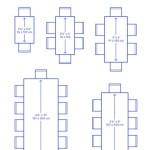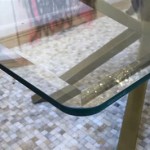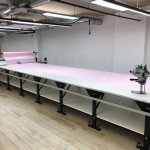Fabric Painting Flower Designs For Tablecloths: A Comprehensive Guide
Fabric painting offers a creative avenue to personalize and enhance the aesthetic appeal of tablecloths. Flower designs, in particular, are a popular choice, bringing a touch of nature, vibrancy, and elegance to dining settings. This article provides a comprehensive guide to fabric painting flower designs on tablecloths, covering essential considerations from material selection to painting techniques.
Selecting the Right Materials
The success of any fabric painting project hinges on the selection of appropriate materials. This includes the tablecloth fabric, paints, brushes, and auxiliary tools. Improper choices can lead to unsatisfactory results, such as paint bleeding, cracking, or fading.
Fabric Choice: Tablecloths are available in a range of fabrics, each with unique characteristics that affect paint adherence and durability. Natural fibers like cotton, linen, and hemp are generally preferred for fabric painting due to their absorbency and ability to bond well with fabric paints. Synthetic fabrics, such as polyester, can be more challenging to paint as they tend to repel water-based paints. A blend of natural and synthetic fibers can offer a compromise, combining the advantages of both. The fabric should be pre-washed to remove any sizing or finishes that may interfere with paint adhesion. Washing also helps to minimize shrinkage after the painting is complete.
Paint Selection: Fabric paints are specifically formulated to adhere to textiles and withstand washing. Acrylic-based fabric paints are a common choice due to their versatility, ease of use, and wide availability. They offer good color vibrancy and durability. However, it's crucial to select paints labeled as "fabric paints" or "textile paints," as these are designed to remain flexible after drying and resist cracking. Options include opaque paints for solid color coverage and transparent or translucent paints for layering and creating subtle effects. For delicate fabrics or intricate designs, consider using fabric dyes, which penetrate the fabric fibers and offer a softer, more natural look. Always test the paint on a scrap of the same fabric to ensure proper adhesion and colorfastness before applying it to the tablecloth.
Brush Selection: The choice of brushes depends on the desired level of detail and the size of the floral design. Synthetic brushes are well-suited for fabric painting, as they are durable and clean easily. Round brushes are ideal for creating fine lines and intricate details, while flat brushes are suitable for filling in larger areas and creating bold strokes. Angled brushes are useful for creating shading and highlighting effects. A variety of brush sizes is recommended to accommodate different aspects of the flower design. Stencil brushes can also be used for applying paint through stencils, creating uniform patterns or lettering.
Auxiliary Tools: A palette is essential for mixing and holding paints. A water container is needed for cleaning brushes. Painter's tape can be used to mask off areas and create clean lines. A pencil or fabric marker is used for sketching the design onto the fabric. An iron is necessary for heat-setting the paint after it dries, ensuring its permanence. Additionally, consider using a foam board or cardboard to insert between the layers of the tablecloth to prevent paint from bleeding through.
Designing and Transferring the Floral Pattern
The design and transfer process is a crucial step in achieving a visually appealing and accurate floral motif on the tablecloth. Careful planning and execution in this stage will significantly impact the final outcome.
Design Inspiration: Begin by gathering inspiration for the floral design. This can be drawn from various sources, including botanical illustrations, photographs of flowers, fabric patterns, or even personal drawings. Consider the overall aesthetic of the dining area and choose flowers that complement the existing décor. Popular choices for tablecloth designs include roses, lilies, sunflowers, daisies, and wildflowers. Abstract floral patterns can also be a visually striking option.
Sketching the Design: Once the floral theme is selected, sketch the design onto paper. This allows for experimentation with different arrangements, sizes, and compositions. Consider the scale of the design in relation to the size of the tablecloth. A large, central floral arrangement can create a focal point, while smaller, scattered flowers can create a more subtle and delicate effect. Ensure that the design is balanced and visually appealing. Pay attention to the spacing between the flowers and the overall flow of the design.
Transferring the Design: After finalizing the design on paper, it needs to be transferred onto the tablecloth. Several methods can be used for this, depending on the complexity of the design and the desired level of precision. A simple method involves using a light box or a well-lit window to trace the design onto the fabric with a fabric marker or a soft pencil. For more intricate designs, transfer paper can be used. Place the transfer paper between the design and the fabric, and then trace over the design with a pencil or stylus. The pressure will transfer the design onto the fabric. Ensure the transfer paper is appropriate for fabric; some can be difficult to remove. If using a pencil, keep the lines light to avoid them showing through the paint. For repeating patterns, consider creating a stencil. Cut out the design from a piece of stencil material (like acetate) and then use a stencil brush to apply the paint through the openings.
Design Placement: The placement of the floral design on the tablecloth is crucial for achieving the desired visual effect. A central design can create a focal point, while a border design can frame the tablecloth. Scattered flowers can create a more informal and whimsical look. Consider the shape and size of the table when determining the placement of the design. Ensure that the design is balanced and visually appealing from all angles. It’s beneficial to use pins to temporarily secure paper templates of design elements to the tablecloth to experiment with placement before committing to the paint.
Painting Techniques and Finishing Touches
The actual painting process requires patience, precision, and attention to detail. Proper techniques and finishing touches are essential for achieving a professional-looking result that is both durable and aesthetically pleasing.
Preparing the Painting Area: Before starting to paint, prepare the work area to protect it from spills and splatters. Cover the surface with a plastic sheet or old newspaper. Secure the tablecloth to a flat surface, such as a table or a large piece of cardboard. This will prevent the fabric from shifting during the painting process. Ensure adequate lighting to see the design clearly.
Applying the Paint: Load the brush with a small amount of paint and apply it to the fabric using gentle, even strokes. Avoid overloading the brush, as this can cause the paint to bleed or smudge. Start with the lightest colors first and gradually build up to the darker colors. This allows for easier correction of mistakes and creates a more layered and dimensional effect. Use different brush sizes and techniques to create variations in texture and detail. For example, use a small, round brush to create fine lines and a larger, flat brush to fill in larger areas. Experiment with different painting techniques, such as dry brushing (using a dry brush to create a textured effect), stippling (using a brush with stiff bristles to create a dotted effect), and blending (mixing colors directly on the fabric). Remember to clean the brushes frequently to prevent the colors from mixing unintentionally. Regularly change the water for cleaning brushes to maintain the purity of the colors.
Adding Details and Highlights: Once the base colors are applied, add details and highlights to bring the floral design to life. Use a fine-tipped brush to add details such as veins on leaves, petals, and stamens. Use lighter shades to highlight areas that would naturally catch the light. Consider using metallic paints or glitter to add a touch of shimmer and sparkle. Experiment with different color combinations to create depth and dimension. For example, use a slightly darker shade of the base color to create shadows and a slightly lighter shade to create highlights. This will make the flowers appear more realistic and three-dimensional.
Heat Setting the Paint: After the paint has completely dried, heat-set it to make it permanent and washable. Place a clean cloth or piece of parchment paper over the painted design and iron it on a medium heat setting, without steam, for several minutes. Check the manufacturer's instructions for the specific heat-setting requirements of the paint being used. Heat-setting ensures that the paint bonds properly with the fabric and will not fade or crack after washing. Allow the tablecloth to cool completely before folding or storing it. Always test a small, inconspicuous area first to ensure that the heat-setting process does not damage the fabric or alter the colors.
Care Instructions: To prolong the life of the painted tablecloth, follow these care instructions: Machine wash the tablecloth inside out on a gentle cycle with mild detergent. Avoid using bleach or harsh chemicals, as these can damage the paint. Tumble dry on low heat or hang to dry. Iron the tablecloth on a low heat setting, without steam, if necessary. Avoid ironing directly over the painted design. With proper care, the fabric-painted floral tablecloth will remain a beautiful and cherished addition to any dining setting for years to come.

Fabric Painted Table Cloth

Hand Painted Saree Designs Fl Art On Fabric

Pin By Agus Triningsasi On Motif Bordir Fabric Painting Clothes Paint Diy

Table Cloth Painting Design

June 2024 Fabric Paint Designs Painting Frames

D Source Design Gallery On Fabric Painting Yadgiri Karnataka Art Digital Learning Environment For Courses Resources Case Studies Galleries S

Table Cloth Painting

Fabric Painting Designs On Tablecloth Indusladies

D Source Design Gallery On Fabric Painting Yadgiri Karnataka Art Digital Learning Environment For Courses Resources Case Studies Galleries S

Fabric Paint Patterns Chemosol








